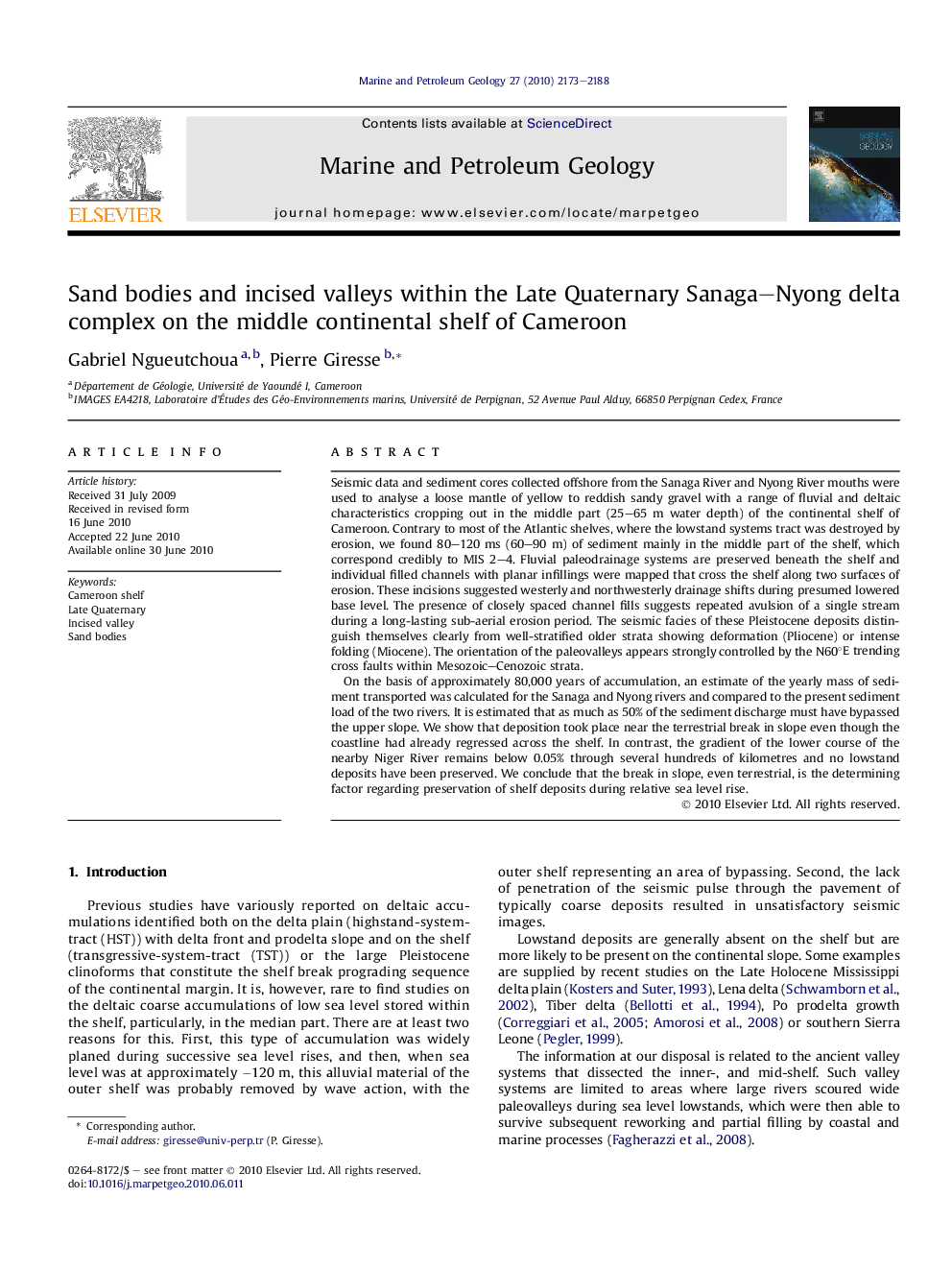| کد مقاله | کد نشریه | سال انتشار | مقاله انگلیسی | نسخه تمام متن |
|---|---|---|---|---|
| 4696402 | 1351673 | 2010 | 16 صفحه PDF | دانلود رایگان |

Seismic data and sediment cores collected offshore from the Sanaga River and Nyong River mouths were used to analyse a loose mantle of yellow to reddish sandy gravel with a range of fluvial and deltaic characteristics cropping out in the middle part (25–65 m water depth) of the continental shelf of Cameroon. Contrary to most of the Atlantic shelves, where the lowstand systems tract was destroyed by erosion, we found 80–120 ms (60–90 m) of sediment mainly in the middle part of the shelf, which correspond credibly to MIS 2–4. Fluvial paleodrainage systems are preserved beneath the shelf and individual filled channels with planar infillings were mapped that cross the shelf along two surfaces of erosion. These incisions suggested westerly and northwesterly drainage shifts during presumed lowered base level. The presence of closely spaced channel fills suggests repeated avulsion of a single stream during a long-lasting sub-aerial erosion period. The seismic facies of these Pleistocene deposits distinguish themselves clearly from well-stratified older strata showing deformation (Pliocene) or intense folding (Miocene). The orientation of the paleovalleys appears strongly controlled by the N60°E trending cross faults within Mesozoic–Cenozoic strata.On the basis of approximately 80,000 years of accumulation, an estimate of the yearly mass of sediment transported was calculated for the Sanaga and Nyong rivers and compared to the present sediment load of the two rivers. It is estimated that as much as 50% of the sediment discharge must have bypassed the upper slope. We show that deposition took place near the terrestrial break in slope even though the coastline had already regressed across the shelf. In contrast, the gradient of the lower course of the nearby Niger River remains below 0.05% through several hundreds of kilometres and no lowstand deposits have been preserved. We conclude that the break in slope, even terrestrial, is the determining factor regarding preservation of shelf deposits during relative sea level rise.
Journal: Marine and Petroleum Geology - Volume 27, Issue 10, December 2010, Pages 2173–2188